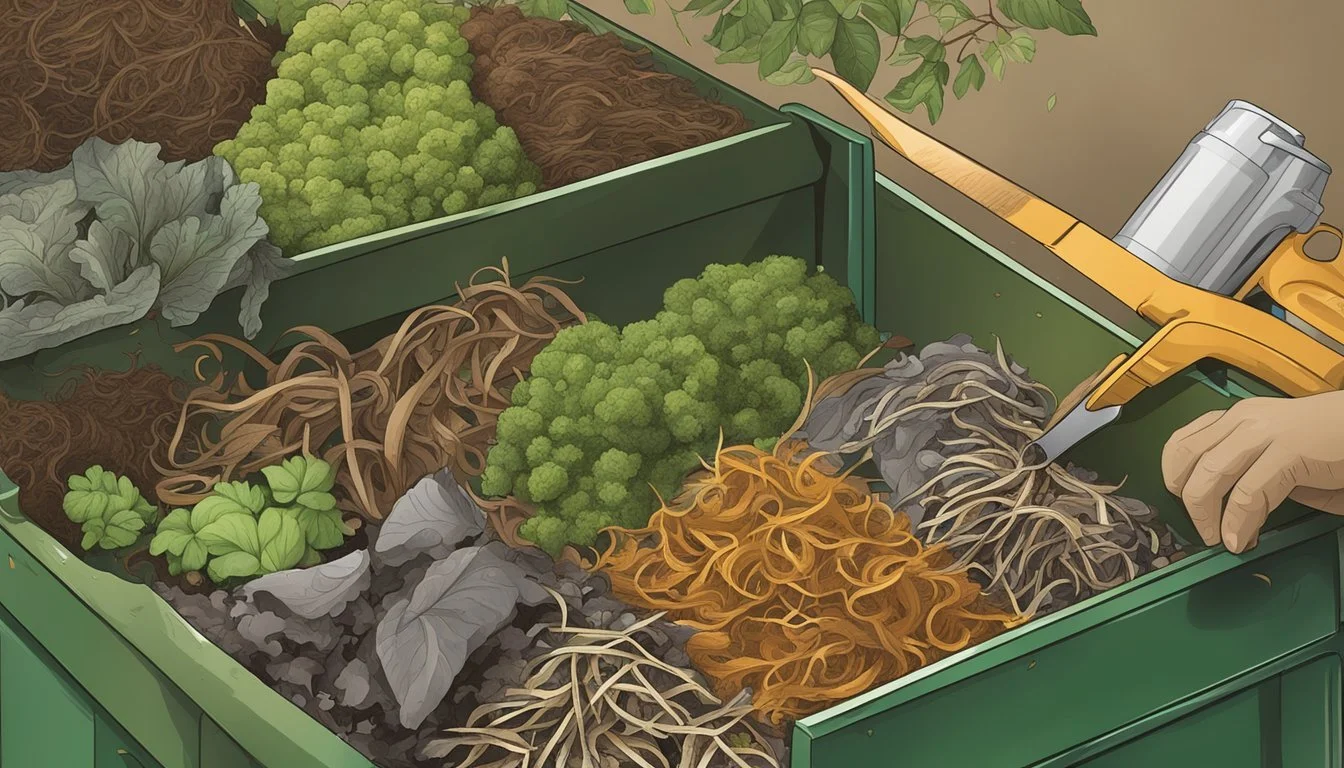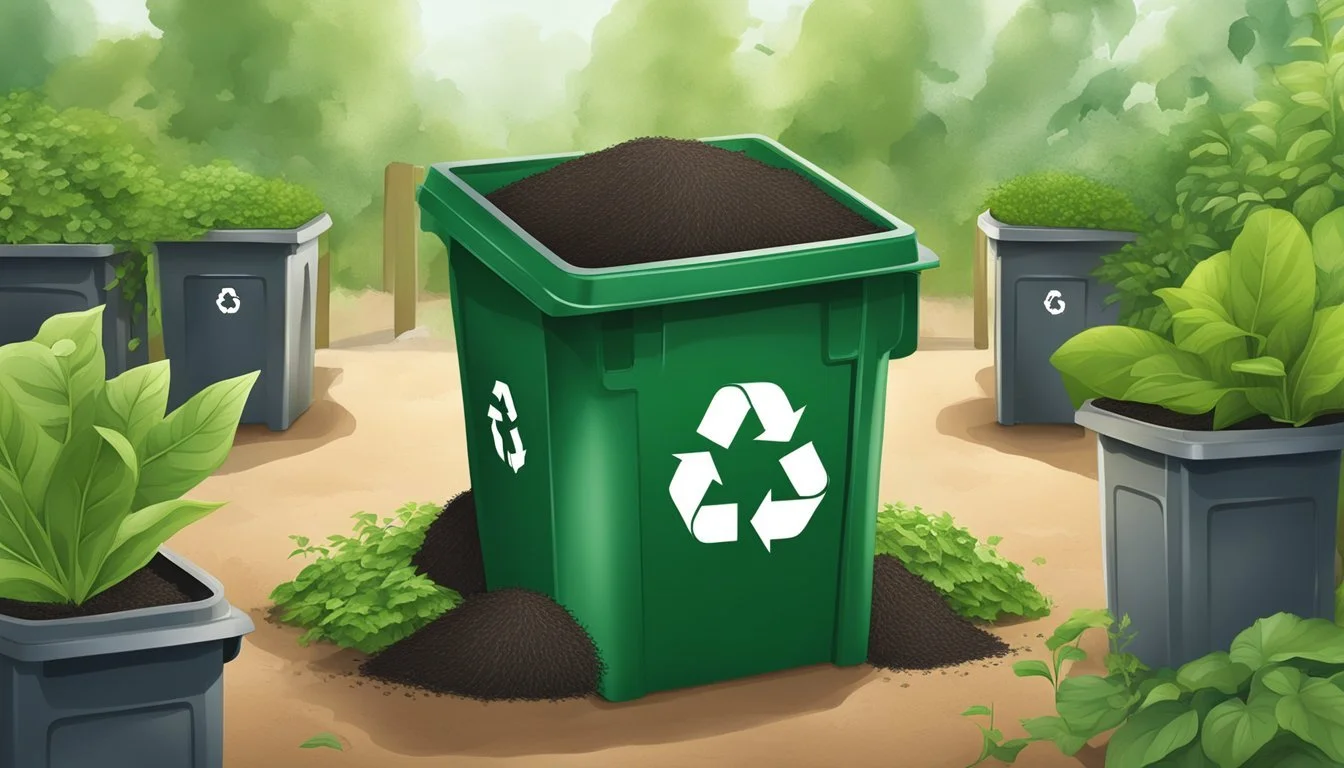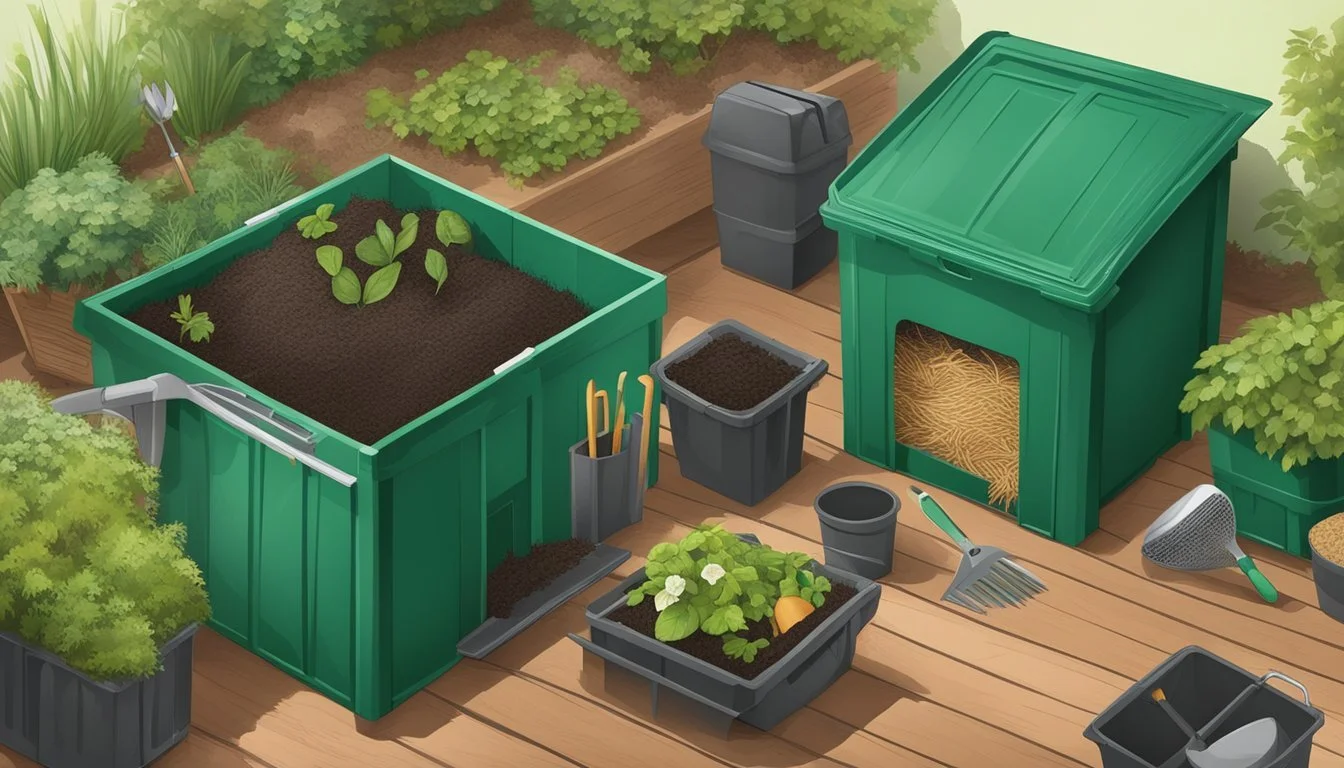Can You Compost Hair Clippings?
Unpacking the Truth About Organic Waste Recycling
Composting is an effective way to recycle organic material and return valuable nutrients to the soil. A variety of organic waste can be included in compost piles, including kitchen scraps, leaves, and even certain types of animal products. Hair clippings, both human and pet, are among the less commonly known compostable materials. They are rich in nitrogen, which is essential for the growth of the microorganisms that break down the compost into nutrient-rich humus.
When added to a compost bin, hair clippings decompose relatively slowly due to their keratin content—a tough and durable protein. To facilitate the breakdown process, it's beneficial to mix hair with other green compost materials that are high in nitrogen and brown compost materials high in carbon. This creates a balanced environment for microorganisms to thrive and efficiently decompose the organic matter.
Safety and cleanliness are important to consider when composting hair. Hair that has been treated with synthetic chemicals or that comes from individuals or animals with disease or parasites should not be composted, as these contaminants may hinder the composting process or harm the resulting compost. However, untreated and healthy hair clippings can be a valuable addition to compost, contributing to a nutrient-rich soil amendment for gardening and landscaping.
Benefits of Using Hair in Compost
Composting hair can provide significant advantages to garden soil, from nutrient enhancement to environmental impact reduction. This natural waste product is uniquely capable of enriching soil's fertility and structure when properly added to compost.
Nutrient Contribution to Soil
Hair is a source of nitrogen, an essential element for plant growth, which it slowly releases as it decomposes. Rich in protein, which breaks down into nitrogen, hair can help balance the nitrogen-carbon ratio in compost. This is crucial for the decomposition process, as it aids in breaking down organic matter more efficiently. Additionally, hair contains sulfur, another important nutrient for plants, contributing to their vitality and resistance to disease.
Improving Soil Structure
When added to compost, hair helps to improve soil structure in several ways. As it decomposes, it contributes to the overall organic matter in the soil, which is crucial for aeration and water retention. These properties are vital for healthy plant root development and the absorption of nutrients. Enhanced soil structure also promotes beneficial microbial activity, further aiding in the decomposition of organic materials and the subsequent release of nutrients.
Environmental Advantages
Incorporating hair into organic compost contributes to an environmentally sustainable practice. By diverting this material from landfills, where it would otherwise take up space and potentially contribute to methane production, composting hair reduces the environmental footprint. Composting hair at home minimizes waste and supports an organic garden by creating a loop of natural recycling, enriching the soil without the need for synthetic fertilizers.
Composting Hair: The Basics
In the realm of composting, hair is a valuable green material due to its high nitrogen content, contributing positively to the composting process when added in appropriate amounts.
What Is Composting?
Composting is the controlled decomposition of organic materials, like kitchen scraps, leaves, and grass, transforming them into a nutrient-rich substance known as compost. Microorganisms play a crucial role here, breaking down the material under the right balance of moisture, oxygen, and temperature.
Key Factors in Composting
Successful composting hinges on maintaining a stable balance between the following factors:
Moisture: Compost should feel like a wrung-out sponge, moist but not waterlogged.
Oxygen: Turning the compost heap helps to aerate it, providing oxygen that is vital for microbial activity.
Temperature: A compost pile reaching the right temperatures (between 135°F and 160°F) indicates active decomposition by microorganisms.
Balance of Materials: A mix of carbon-rich "brown" materials (like leaves) and nitrogen-rich "green" materials (like grass and kitchen scraps).
Understanding Brown and Green Materials
A compost heap requires a balance of brown and green materials to decompose efficiently:
Brown Materials: Carbon-rich elements provide the microorganisms with energy. Examples include dried leaves, twigs, and cardboard.
Green Materials: Nitrogen-rich elements which are proteins that help microorganisms grow and reproduce. Hair falls into this category, alongside food scraps and lawn clippings.
The Process of Composting Hair
Composting hair clippings can enhance the nitrogen content in a compost pile, supporting the growth of beneficial microorganisms that facilitate decomposition. However, correct preparation, layering, and maintenance are crucial for effective composting of hair.
Preparation of Hair for Compost
Before adding hair to compost, ensure it's untreated to avoid introducing unwanted chemicals into the pile. Both human hair and pet hair are acceptable, but they must be free from synthetic treatments. Collect hair in a clean container after using brushes or following a haircut, but always check for parasites or disease, which could be detrimental to the composting process.
Layering and Mixing Ingredients
For optimal decomposition, hair should be mixed with other compostable materials within a balanced ratio of nitrogen (green components) and carbon (brown materials). Use the following layering method for better aeration and decomposition in a compost pile or tumbler:
Begin with a base layer of brown materials like leaves or straw to allow airflow at the bottom.
Add a layer of green materials, such as kitchen waste or grass clippings, to provide moisture and nitrogen.
Sprinkle a thin layer of hair to prevent matting and distribute the nitrogen content evenly.
Repeat the layering, maintaining a larger proportion of brown components to green, generally suggested as a 3:1 ratio of carbon to nitrogen.
A balance between green and brown layers is essential for maintaining proper moisture levels and promoting aeration.
Maintaining the Compost Pile
Maintaining a compost pile with hair involves regular aeration and monitoring moisture levels. Aerate the pile by turning it frequently, which also helps to distribute the hair and other materials evenly, speeding up the decomposition process. In a compost heap, use a fork to turn the pile, while in a compost tumbler, simply rotate the container. Monitor the pile to ensure it remains damp but not waterlogged, as excessive moisture can cause rotting and reduce aeration. Whether you manage a cold compost pile or a hot composting system, these steps will facilitate a healthy and efficient decomposition of hair alongside other compostable materials.
Advanced Composting Techniques
In the realm of composting, techniques can vary widely, but advanced methods focus on optimizing the decomposition process to turn organic material like hair clippings into rich soil amendments effectively.
Hot vs. Cold Composting
Hot composting is a more active and faster method that involves maintaining the compost pile at higher temperatures (between 135°F and 160°F) to speed up the decomposition of organic material. Cold composting, in contrast, is less labor-intensive but takes longer, as it relies on the natural breakdown of materials without active temperature management.
Temperature: To optimize hot composting, one must monitor the heat levels to ensure efficient breakdown of keratin in hair, which decomposes faster in warm conditions.
Aeration: Regularly turning the compost pile introduces oxygen, crucial for aerobic bacteria to thrive and break down materials like garden waste and hair clippings.
Vermicomposting With Hair
Vermicomposting utilizes worms to convert organic material into vermicompost, a nutrient-rich byproduct. When adding hair to a vermicompost system:
Worm Diet: Moderation is key, as hair is high in nitrogen and should be balanced with carbon-rich materials to avoid overloading the worms.
Decomposition: Worms can process hair due to its organic nature, but it's important to remember that hair decomposes slowly because it is made of keratin, a tough protein.
Avoiding Common Pitfalls
Ensuring successful composting of hair clippings involves attention to detail to avoid common pitfalls:
Balance: The compost pile should maintain a proper balance between greens (nitrogenous materials such as hair) and browns (carbonaceous materials), preventing issues such as foul odors or pests.
Chemicals: One must avoid composting hair treated with toxic or synthetic chemicals, as these substances can hinder the decomposition process and introduce toxins into the compost.
Safety and Environmental Concerns
When adding hair to compost, it's crucial to consider the origin of the hair and its previous treatments, as these factors can directly affect the safety and environmental impact of your composting practices.
Dealing with Treated Hair
Hair that has been treated with toxic chemicals, such as bleach or synthetic hair dyes, poses a risk when composted. These chemicals can leach into the compost and ultimately into the soil, potentially harming microorganisms crucial to the composting process. To ensure safe composting, only hair free from these harmful substances should be added to compost piles.
Acceptable Hair for Composting:
Untreated human hair
Pet hair from dogs and cats that have not been treated with chemical flea treatments or other products
Unacceptable Hair for Composting:
Hair with chemical products such as hairsprays, gels, or creams
Hair treated with permanent dyes or bleach
Impact on Wildlife and Pets
Composted hair can be beneficial as a natural animal repellent due to its scent, which can deter certain pests from garden areas. However, it is essential to ensure that the hair does not become a hazard for wildlife or domestic pets. Its fine strands can become matted or ingested, leading to potential health issues.
Preventative Measures:
Ensure hair is well mixed within the compost to avoid clumping
Monitor compost piles for signs of disturbance by animals
By taking these safety and environmental factors into account, composting hair can be a valuable practice that contributes to a nutrient-rich soil amendment while reducing waste in landfills.
Practical Applications in Gardening
Gardening enthusiasts can enhance soil quality and plant growth by incorporating hair clippings into their compost. Such an organic addition provides vital nutrients during decomposition while also serving practical mulching purposes.
Hair as Fertilizer for Plants
Hair clippings can be a beneficial addition to garden compost because they are rich in nitrogen, a nutrient essential for plant growth. As hair decomposes, it slowly releases nutrients back into the soil, making it a long-lasting fertilizer.
Nutrient Composition: Hair is primarily composed of keratin, which breaks down to offer nitrogen, phosphorus, and potassium to your garden's soil.
Application: For effective use, hair should be sprinkled lightly over the compost pile to avoid clumping and to ensure a proper breakdown.
Using Hair for Mulching and Weed Control
Besides being a nutrient-rich fertilizer, hair can also serve as an organic mulch to assist in moisture retention and weed control in gardens.
Mulching Instructions: To use hair as mulch, spread thin layers around plants, which will form a natural barrier, helping soil retain moisture and suppress weeds.
Weed Suppression: Hair's ability to compact over time creates a dense layer that can discourage the growth of unwanted plants, protecting your garden from invasive weeds.
Beyond the Garden: Hair in Sustainable Practices
Hair clippings reach beyond compost piles, showcasing their versatility in ecological sustainability efforts. Here, we'll explore two notable applications of hair as a tool for environmental protection and sustainable product development.
Hair for Oil Spill Cleanup
In recent years, research has demonstrated that hair—a naturally occurring organic matter—is remarkably efficient at absorbing oil from water. They can be fashioned into mats or booms which are then used to tackle oil spills, thereby protecting the environment. This innovative use capitalizes on hair's inherent properties to offer a low-cost and organic solution to a persistent environmental hazard.
Efficiency: Hair fibers have a natural affinity for oil, making them effective at skimming off pollutants without absorbing much water.
Sustainability: As a compostable material, hair-based cleanup tools are environmentally friendly and reduce reliance on synthetic options.
Integrating Hair into Eco-friendly Products
The push for sustainability has led to integrating hair into various compostable products. Since hair is robust and slow to decompose, it can be utilized within a range of eco-friendly goods, further minimizing waste.
Examples of Products:
Non-woven textiles
Plant-based pots that enrich the soil once they degrade
Bio-composites as a plastic alternative
Research into new applications is ongoing, emphasizing hair's role in the circular economy, where products are designed to be reused and repurposed rather than disposed of. The integration of hair into compostable materials underlines the creative and eco-conscious endeavors to address environmental challenges.
Conclusion
Hair clippings are indeed a valuable addition to compost heaps, contributing essential nitrogen that aids in the decomposition process. When adding hair to compost, gardeners should remember that moderation is key to maintain balance within the compost pile.
Nitrogen-rich: Hair is rich in nitrogen, which is a necessary component for composting microorganisms.
Balance is crucial: To prevent clumping and ensure even decomposition, mix hair evenly into the compost pile.
Chemical-free: Hair treated with synthetic chemicals might hinder the quality of compost. It is preferable to use untreated hair.
Composting hair, along with other organic materials such as kitchen scraps and garden waste, creates a nutritious soil amendment that can contribute to the health of garden plants. This process aligns with sustainable practices by reducing landfill waste and enhancing the fertility of the soil without synthetic fertilizers.
Proper hair composting requires basic knowledge and simple practices:
Mix thoroughly: Ensure hair clippings are well mixed with other organic matter.
Avoid excess: Don’t overdo it; too much can lead to matting and slower decomposition.
Stay informed: Seek reliable information to refine composting techniques.
By following these practices, gardeners can confidently incorporate hair as an effective component of their composting routine.







